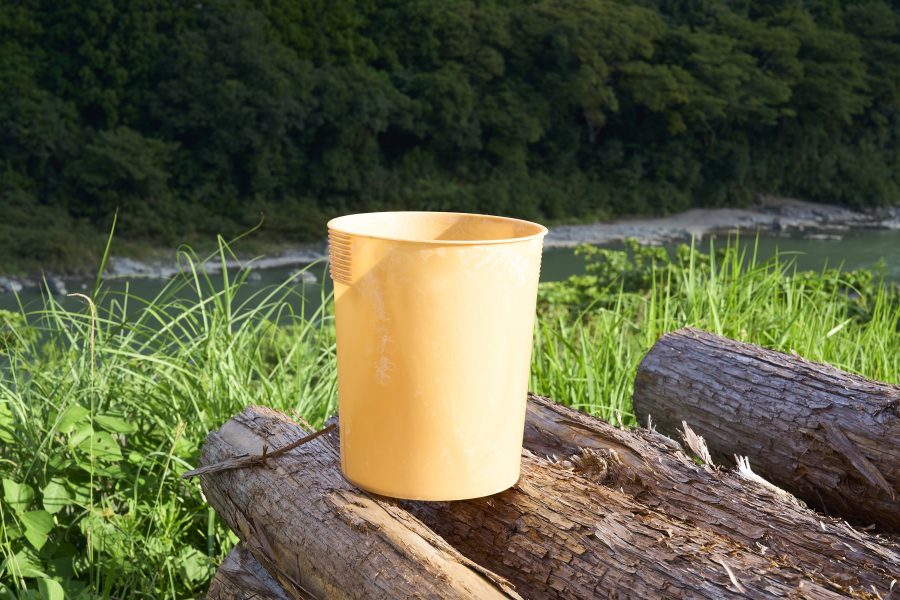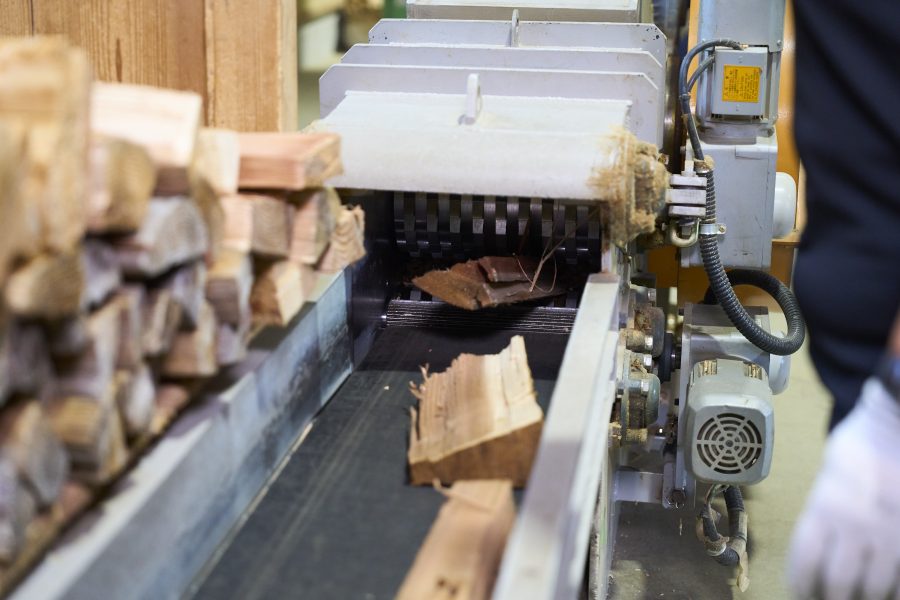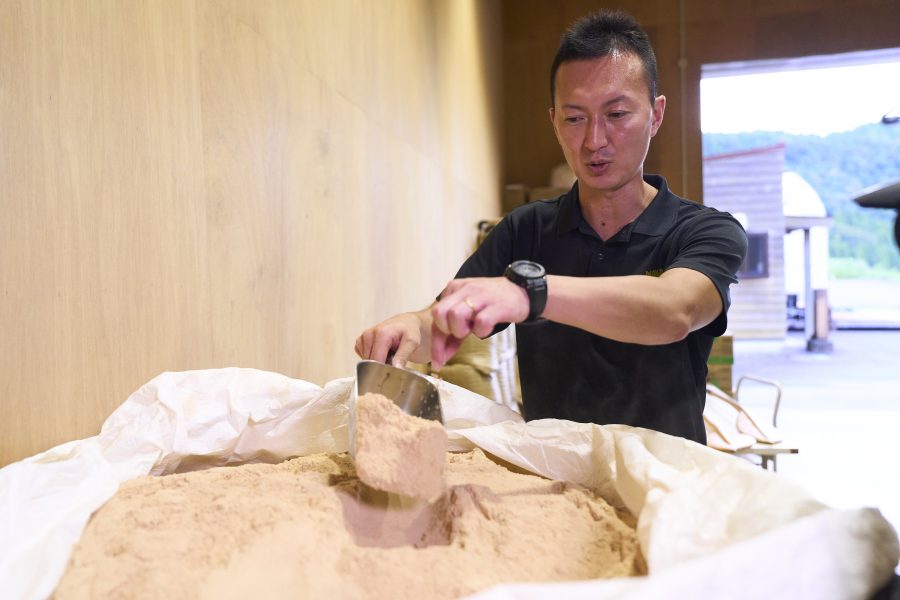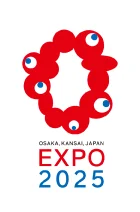
Located in the southern part of Tokushima Prefecture, more than 90% of Naka Town is covered with forests. With a population of just over 7,000, the town continues to see depopulation and aging even after merging with five other towns and villages. To the Expo venue, the town will be sending a “trash can that revitalizes forests and communities” that makes use of unused wood and bamboo from the prefecture. The can is made from resin-processed “wood powder,” made from crushed trees, and is expected to have great potential for use in a wide variety of products. This article sends a passionate message “Forestry is cool” from “Naka, the land of clear streams and forests.”
The wood powder is manufactured by Naka Wood, which has been in business for 10 years. The Vice President Yohei Shono was born into a bamboo shoot farming family in the neighboring city of Anan and grew up playing in bamboo groves. Anan City once boasted the nation’s number one bamboo shoot production volume, with much of it being processed into boiled produce, but the production declined as cheaper products began to be imported from China, and a lack of successors has led to an increase in abandoned bamboo groves. The beautiful bamboo groves, if well-maintained, allow sunlight to penetrate to the soil. However, if pruning is neglected and the groves are left to overgrow, the bamboo will grow densely, leaving no room for undergrowth. When this happens, the bamboo, which has shallow roots, is easily washed away by heavy rains, causing disasters such as landslides. As someone who has personally experienced such conditions, it was only natural that Shono would aim to utilize bamboo and wood to contribute to the realization of a recycling-oriented society.
Naka Wood, Panasonic Production Engineering, a partner company in charge of manufacturing, and the other two companies participate in the project for the “trash can that revitalizes forests and communities,” and Orikane, a trading company specializing in food packaging materials, serves as the representative company, paving the way for the project to be submitted to the Co-Design Challenge.
Naka Wood’s factory is located on a spacious plot surrounded by lush nature, with a clear stream flowing below. Raw wood logs are stacked on top of each other, and next to the factory, firewood split by machine and lumber scraps are placed haphazardly to dry. Wood chips brought into the factory are manually fed into a conveyor and passed through a crushing line. After passing through several processes, the machine spits out a fine dry wood powder that retains the aroma of the wood. The texture is even finer than the “saw dust” that is produced as a result of sawing wood, and is comparable to “soybean flour.” The wood powder is processed using Naka Wood’s unique know-how. The company uses unused wood from Tokushima Prefecture, a reliable supply source, and thoroughly manages pre-treatment, pulverization, and storage, achieving consistent and stable product quality. There is no contamination with adhesives, preservatives, or the like because no demolished wood material is used. The forestry industry of Tokushima has hope thanks to Shono’s commitment to “using up all the local wood without wasting a single bit.”


(Mr. Yohei Shono, Executive Vice President, Naka Wood)
Share this article


